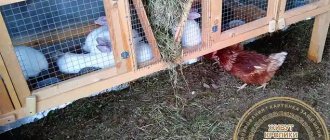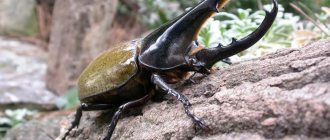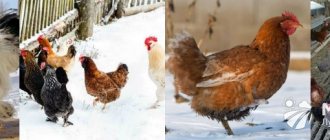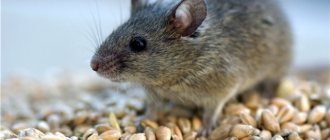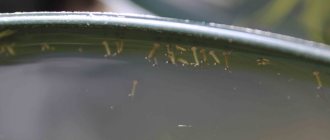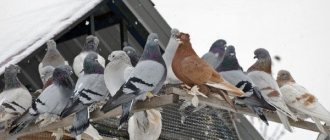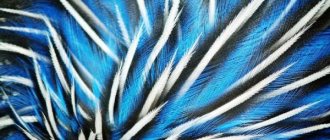What to feed a goat in winter
In winter, for proper nutrition, the goat should receive at least 1 kg of roughage per day, and preferably 2.5-3 kg. Hay is the type of food that goats should constantly have in their diet during the cold season. Goats eat best meadow or forest hay made from young plants. Grain feed and any other treats should be mixed with portions of hay. This will allow your goats to continually maintain proper rumen function and create a favorable environment for their digestive system. As you know, healthy digestion is the key to success when keeping ruminants. In addition, good rumen function will provide the goats with an additional portion of heat, which is also of great importance in winter.
For the period of being kept in a stall, one adult goat will need 500-550 kg of hay, and young animals from 6 to 12 months - 320 kg. Half of the daily requirement of hay can be replaced with brooms made from birch, poplar or willow. In winter, a goat can eat 3-5 brooms a day.
The best succulent food for goats during the stall period is fodder beets, potatoes, cabbage and vegetable waste. Root vegetables are crushed and given raw, 2-4 kg per day, potatoes are boiled and given 1-2 kg. Beet and carrot tops and cabbage leaves will also be used. This food can be given 3-4 kg per day per adult goat. In this case, for every kilogram of beet tops you need to add one gram of ground chalk to neutralize the acids present in it.
Be sure to provide goats with access to salt licks. Also, regular table salt (not extra) is suitable as an alternative for goats. It should be given to animals at the following rate: dry goat 7-8g, dry goat 10g. in a day.
To keep your animals active and vigorous all winter, hay alone is, of course, not enough. During periods of particularly severe cold, the amount of concentrated feed in the goats’ diet should be increased.
Attention!
Remember that goats and sheep, if given large amounts of concentrates, are susceptible to urolithiasis. Therefore, you should purchase feed that takes into account the needs of this particular type of animal and is balanced in composition. As a rule, manufacturers add ammonium chloride to the feed.
Prevention of urolithiasis consists of following the feeding and maintenance regime of animals. When symptoms of the disease appear, concentrates rich in phosphorus are reduced or completely removed from the diet, and the supply of green vitamin feed is increased, microelements are introduced (copper, cobalt, zinc, manganese), and water is provided.
And in the video you can watch wild mountain goats - ibex - in their natural habitat
Ways to increase milk yield in winter: lactation
It is equally important to follow a special diet during lactation. The quality of milk, milk productivity and the health of the animal primarily depend on the goat’s nutrition.
To increase milk yield, add more minerals, branches and leaves, vegetables, grains, root vegetables, high-quality hay, and water to the diet. Milk yield also depends on milking. Try to do this periodically, at the same time, and milk out the milk to the last drop.
Take walks and remember that any stress can negatively affect the milk production process!
Always hot water
It's amazing how hot water goats can drink! Sometimes the breeder may even think that the goat will burn its tongue, but it should be remembered that the body temperature of these animals is higher than that of humans (39-40 degrees). If you have the opportunity to install heated drinking bowls for goats, the animals will certainly appreciate it. It is especially important that goats always have access to water, since due to their anatomical features they are prone to urolithiasis and must drink a lot.
What can they get sick with?
Goats have good immunity. By providing your animals with proper care, you don’t have to worry about their health. However, your health status must be constantly monitored. A sick animal most often exhibits the following symptoms:
- shortness of breath;
- breathing becomes rapid;
- lactation stops, swelling of the udder is observed;
- loss of appetite;
- body temperature rises to 41-42 °C.
After lambing, inflammation of the udder occurs. Causes of the disease: drafts, dirty damp bedding, cold wet floor. For treatment, the affected part of the udder is lubricated with ointments (zinc, lead), warming compresses of camphor oil and ichthyol ointment are applied.
The appearance of cracks in the nipples is caused by inept milking or poor care of the animals, or rough, scratchy bedding. Treating the teats and udder with a boric acid solution helps eliminate cracks. Damaged areas are also lubricated with ghee and Vaseline.
Goat barn
In fact, goats are not considered very heat-loving animals and are excellent at regulating their body temperature even in severe frost. If you are the happy owner of wool or downy breeds, you practically don’t have to worry about protection from low temperatures. It’s more likely that the owners will freeze in their houses faster than the Agrog goat in its beautiful fur coat will feel that it’s really cold outside.
However, goats still need to be protected from wind and dampness. These animals are susceptible to pneumonia, which is most often contracted from a strong draft or high humidity. Therefore, owners should take care of shelter for goats from snow and wind. Although, you should also not get carried away with excessive sealing; do not forget that the air in the livestock building must be fresh and regularly updated.
As a rule, special heating in a goat shed is not required. The only exceptions are during lambing periods, when newborn kids need to be protected from sudden temperature changes. A slightly higher temperature, as well as increased attention, is also required during this period for sick or weakened goats.
The air temperature in winter must be maintained at +6...+7. Goats can create this temperature on their own. If there are also kids with the goat, then the temperature in the room should be +8..+10.
The floor in the goat house is best made of planks. For each goat, a separate pen is made with a manger for bulk feed and feeders for concentrates and root crops. Water is also poured into a drinking bowl or bucket, which is hung so that the goat does not turn it over.
Winter maintenance without heating system
As mentioned above, there is no need to build a room with a special heating system for most breeds of goats. Due to their anatomical features, animals independently regulate their body temperature, due to which the body adapts to environmental conditions. The characteristics of down and wool breeds were discussed earlier.
Goat - producer
When keeping goats in barns without a heating system, you should still remember to create the most comfortable conditions for the animals. If the contents are free, it is recommended to install wooden flooring in one of the corners of the room. Such coverings raised above the ground allow ungulates to rest comfortably. Stall conditions require the presence of a sufficient layer of warm bedding on the floor.
As for the housing standards for area per animal, they are as follows:
- breeding goat – 2 m²;
- barn goat – 2 m²;
- goat with kids – 3.5 m²;
- young animals aged 6-12 months – 1.2 m².
Place to stay overnight
Goats are very clean animals and prefer to sleep not on bare ground, but on a bedding or on a wooden pedestal specially prepared for this. You can make a platform along one of the walls of the barn. The elevation above the floor is about 40 cm high and 50-60 cm wide. Goats simply love to sleep on such elevations. In addition, things will always be warmer on the platform.
In winter, it is especially important to pay attention to the cleanliness of the goat house and disinfect the pallets and bedding on which the animals sleep once a week.
Creating a warm goat house
Keeping goats in a barn without heating is possible, you just need to take into account a number of rules and requirements:
The animals themselves are able to maintain the optimal temperature for them in the goat's rue. If there are pregnant and newborn goats in the barn, then the temperature should be 9-10 degrees, in other cases not lower than 6 degrees;
Keeping in drafts or in rooms with high humidity is unacceptable, as animals can get pneumonia;
Make the floor wooden in advance, additionally placing straw, dry moss, and sawdust on it;
The lighting in the barn should be natural. Place the windows at a height of one and a half to two meters from the floor so that goats cannot knock them out with their hooves;
Use an exhaust pipe for ventilation to maintain fresh air in the goat house;
It is better not to keep females with a goat, as its smell can transfer to the milk;
And, of course, don’t forget about keeping the goat shed clean and dry.
Regular walks
Even in winter, goats need to move, because the animals are curious and very active. Daily walks and physical activity in the form of jumping and running will help improve the tone of the animals and their excellent mood. Even snow and ice are not an obstacle for goats to frolic. Just remember an important rule - snow and pieces of ice can get stuck between the hooves, causing them pain and even serious injury. For this reason, the condition of the hooves must be monitored throughout the winter, and the area of the barnyard intended for walking must be cleared of snow and ice.
Food for thick fur
To stimulate the growth of the undercoat, from which cashmere is also made, important minerals and vitamins should be regularly added to the goats’ food in winter:
- zinc;
- iron;
- magnesium;
- copper;
- vitamins A, C, E.
The undercoat will create an air layer around the goats body, which will prevent the animals from freezing even on the coldest nights. Blankets are put on goats in winter only if for some reason they have lost their fur or become ill.
Prevention of frostbite
Goats that are outside in winter can get frostbite on particularly sensitive areas of the body. As a rule, the udder is at risk. To protect it, before letting the animals go for their daily walk, smear the udder of dairy goats with a special anti-frostbite ointment or Vaseline. For breeds with long ears, such as the Nubian goat, it would be useful to treat the inner surface of the ear with ointment, since even it can be caught in severe frost.
Find out how to choose the right dairy goat here
©
Prevention of diseases in goats
1. The importance of deworming
In general, goats are not prone to getting sick, but they often suffer from parasites. Therefore, deworming should be carried out twice a year, including before the winter stall period.
Deworming is a preventive treatment aimed at destroying parasites, their eggs and larvae.
Deworming should be done if:
The animal began to lose weight sharply and severely;
Milk productivity has decreased;
Weakness appeared. Remember that a lethargic and inactive animal is sick!;
Wheezing appeared when breathing;
Cough, dermatitis (if larvae get under the skin).
The most frequently used and popular drugs for worms and other parasites are Ivermek and Alben. The first will kill worms and subcutaneous larvae, and the second will have a wonderful effect on ticks.
2. Prevention of frostbite
Most often, the most sensitive areas of the animal's body - hooves, udders, ears - are exposed to frostbite. Before grazing, coat these areas with Vaseline or a special ointment.
If you have already noticed frostbite in a goat, accompanied by swelling of the skin, thickening, then you should immediately transfer it to a warm room, give it a general massage, warm it with a Sollux lamp, and give the animal warm milk or ethyl alcohol.
Your benefit
We make the building according to your dimensions
- Our company’s specialists design, manufacture and install metal structures.
- When concluding a contract, unlike our competitors, we approve the final estimate, which is not subject to unilateral change in the future.
- We build spans of up to 30 meters without the use of additional supports, which allows us to save useful space on site and the Customer’s finances.
- Year-round installation of LMK and LSTK and high-tech construction allows us to build facilities in any weather conditions anywhere in the world.
A number of completed projects
We specialize in the construction of turnkey projects. This portfolio presents a number of projects we have built at different stages of construction.
Regular reporting
Our clients receive photo reports on the progress of construction on a regular basis. This allows you to control the construction site remotely, without the need to constantly travel to the site and waste your time.
UMD Group is:
- 144
built objects
- 63
experienced employee
- 7
years on the market
- 100
years warranty for LSTK
Or contact us right now:
8-800-500-19-95
Ekaterinburg, st. Malysheva, 51, of. 26/19 (BC “Vysotsky”)
Talantsev Evgeniy Vyacheslavovich
Head of Sales Department
How to protect a goat from frostbite and helminthic parasites
Helminths cause harm to goats not only in the summer, but also in the winter. Moreover, in the latter case, internal parasites living in the intestines or other organs cause a lot of trouble. The ungulate's body is already weakened due to a lack of vitamins, and then there are helminths.
Infected individuals poorly absorb the nutritional components of feed, which causes a decrease in immunity. As a result, sick goats become more susceptible to low temperatures and often contract various diseases.
If internal parasites are detected, it is necessary to carry out complete deworming of all livestock on the farm.
An equally serious problem in winter is frostbite. Yes, goats are physically active ungulates with good resistance to frost, but there are a number of areas on the body that suffer from low temperatures. Animals that are kept outdoors or spend long periods of time on walks are especially susceptible to this. Very often the udder becomes frostbitten because it does not have a layer of fat or hair.
The most effective prevention against frostbite is the use of Vaseline or a special ointment. Both of these products must be applied to the udder in a thick layer before the goat goes for a walk. Nubian goats with long ears are treated not only with the udder, but also with the inside of the ear.
| In contact with: |
| Facebook: |
| Classmates: |
During the cold season, all domestic animals and birds require special care, goats are no exception. In this article we will look at what it should be like to keep goats in winter at home.
Myotonia phenomenon
Not only is the fact of the presence of myotonia in goats unique, but also the fact that it manifests itself only in every second generation. The disease is characterized by muscle spasms or short-term paralysis. Do not think that the individual is losing consciousness. During these 10-15 seconds, she is aware of everything, but cannot move. The cause of the disorder is problems in chromosome 19. The phenomenon can also be found in people. In addition, it has four forms. It is difficult to say whether goats are susceptible to one variety or whether all 4 occur. Diagnosis in this case is based on mental indicators. It is impossible to assess them in an individual.
It is interesting that if fainting goats are crossed with representatives of another breed, then the result can be either a completely healthy baby or one with this disease. It is worth noting that this feature does not pose any particular danger to the animals themselves. It does not affect their health and well-being in any way. The exception is those cases when the animal may suffer as a result of an unfortunate fall. After all, they do not choose in advance a more comfortable position and place.

